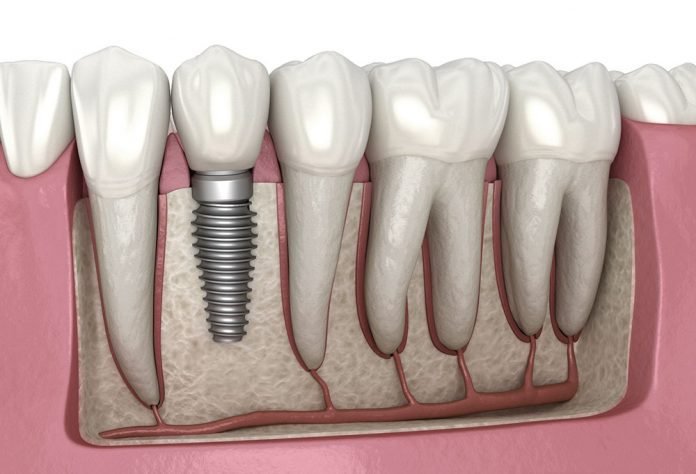Last Updated on March 12, 2024 by admin
Dental implants are an effective and long-lasting solution for those missing one or more teeth. They provide a strong foundation for permanent replacement teeth that look, feel, and function just like natural teeth. With proper care and maintenance, they can last a lifetime. If you are missing one or more teeth due to injury or disease, ask your dentist if dental implants may be right for you.
Table of Contents
Definition of Dental Implants
Dental implants such as best dental implant in Singapore are a revolutionary form of tooth replacement that offers an effective, long-term solution for missing or damaged teeth. This method of restoration has become a popular choice for those seeking to replace one or more missing teeth. Dental implants are designed to look and feel like natural teeth and can last a lifetime with proper care and maintenance.
A dental implant is an artificial root made from either titanium or zirconia that is surgically placed into the jawbone in order to hold a replacement tooth or bridge in place. The implant is designed to fuse with the surrounding jawbone over time, providing strength and stability similar to natural roots. Once fully integrated into the bone structure, it acts as an anchor for the replacement tooth or bridge, which can be customized to match the shape and colour of your existing teeth.
Aside from providing aesthetic benefits such as improved appearance, dental implants also provide practical advantages including better chewing ability; they help preserve adjacent healthy teeth by eliminating the need for additional treatments such as crowns; they also reduce bone loss due to missing teeth; they help maintain facial structure by keeping existing bone intact, and lastly, they provide superior comfort compared to traditional dentures since there’s no movement when you bite down on food.
Benefits of Dental Implants
Dental implants are a great way to replace missing teeth and restore the natural look of your smile. They are a permanent solution that can give you back the confidence you may have lost when your teeth were lost or damaged. Not only do they provide aesthetic benefits, but dental implants also offer several health advantages as well.
The most obvious benefit of dental implants is that they look and feel like natural teeth. Implants are made from titanium and fused securely into the jawbone, making them one of the most secure tooth replacement options available today. Dental implants can last for decades with proper care, making them an ideal long-term solution for replacing missing or damaged teeth.
Dental implants also help to preserve jawbone structure and density in areas where there is no longer a tooth root present. This helps keep facial muscles from sagging over time due to bone loss around the area where a tooth is missing, giving you a more youthful appearance for years to come.
Moreover, dental implants don’t require any special maintenance or cleaning like traditional dentures do – just flossing and brushing regularly will keep them clean! Additionally, since they’re secured directly into the jawbone via surgery rather than relying on adhesives like dentures do
Types of Dental Implants
Dental implants are a popular and effective way to replace missing teeth. They are essentially artificial tooth roots that are placed into the jawbone to support a dental prosthesis such as a crown, bridge, or denture. There are several different types of dental implants available, and each type has its own advantages and disadvantages.
Endosteal Implants: Endosteal implants are relatively common, as they provide a more permanent solution compared to other types of dental implants. These consist of small metal screws that are inserted directly into the jawbone in order to provide greater stability for the artificial tooth root. The process for inserting endosteal implants usually requires two surgeries: one for the implantation itself and another for attaching an abutment (connector) that will attach the artificial tooth root to the implant.
Subperiosteal Implants: Subperiosteal implants also involve placing metal screws into the jawbone but instead of going directly into it, they rest just above it on top of gum tissue or bone. This type is often used when there isn’t enough healthy bone available in order to support an endosteal implant due to injury or disease-related deterioration; however, they have been known to cause irritation over time due to their exposed
Clinical Procedure for Placement of a Dental Implant
A dental implant is a surgical procedure used to replace missing teeth with artificial ones. The procedure involves placing a titanium post into the jawbone, which acts as a root for the replacement tooth. The implant is then attached to an abutment or connector, and finally topped with a dental crown, bridge or denture prosthetic to complete the restoration process. The placement of a dental implant requires precise planning and meticulous execution by experienced practitioners. Here we explain the steps involved in the clinical placement of a dental implant:
1) Initial Consultation: The first step of placing any type of dental implant involves visiting your dentist for an initial consultation. During this visit, your dentist will take X-rays and impressions of your mouth to evaluate your oral health condition, determine if you are an ideal candidate for implants and plan out where each one should be placed.
2) Treatment Planning: Once the initial assessment is completed, your dentist will create treatment plans that include details such as the number of teeth being replaced, type of restoration needed (dental crowns, bridges or dentures), positioning and size of implants required etc., all tailored according to individual needs.
3) Surgical Procedure: During surgery, local anaesthesia or conscious sedation may be used depending on the patient.
Possible Complications During and After the Procedure
When undergoing a medical procedure, it is important to understand the potential risks and complications that may arise during or after the procedure. Complications during and after a medical procedure can range from minor inconveniences to serious health concerns. Being aware of possible complications can help you better prepare for any situation that may arise, as well as provide peace of mind that you are taking proper measures to ensure your safety.
Some common complications that may occur during a medical procedure include infection, bleeding, swelling, bruising or nerve damage. Infection is one of the most common risks associated with any type of surgery or invasive procedure. To reduce this risk, it is important to follow all pre-op instructions provided by your healthcare provider and take steps towards maintaining good hygiene before and after the procedure. Bleeding can also occur if blood vessels are damaged during the operation; however, this complication is usually managed with pressure dressings or medications prescribed by your doctor prior to your surgery. Swelling can also be present in areas surrounding the surgical site due to fluid buildup; however, this usually subsides within several days following surgery. Nerve damage may also be an issue depending on what type of surgical intervention was performed; in some cases, physical therapy may be recommended for a successful recovery from such complications.














